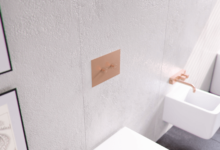What Happens During A Water-Damaged Phone Repair Services? A Step-By-Step Guide

Water damage is one of smartphone users’ most common and frustrating issues. Whether it’s an accidental drop in the pool, a spill of your favourite drink, or unexpected rain, water can cause significant damage to your device. However, not all hope is lost.
Professional water-damaged phone repair services can often revive your phone and save you from the hefty cost of a new device. Here’s a step-by-step guide to what happens during a water-damaged phone repair.
1. Initial Assessment
The first step in any water-damaged phone repair service is the initial assessment. Technicians evaluate the extent of the damage. This involves visually inspecting the device and looking for common signs of water exposure, such as discolouration, moisture under the screen, or corrosion on the charging port.
They may also use a moisture meter or thermal imaging to detect water presence inside the device. The technician will then ask about the circumstances of the water exposure (e.g., type of liquid, duration of exposure) to better understand the situation.
2. Disassembly
Once the extent of the damage is assessed, the technician will carefully disassemble the phone. This process involves removing the back cover, battery (if removable), SIM card, and other components. Special tools are used to open the phone without causing further damage.
The disassembly is crucial because it allows the technician to access the internal components that are most likely affected by water. These components include the motherboard, battery, camera, and other electronic parts.
3. Drying Process
After disassembling the phone, the technician will begin the drying process. This step is critical because any residual moisture can cause short circuits and further damage the internal components.
Technicians typically use specialized equipment, such as a drying chamber or desiccant packs, to remove moisture from the phone. Sometimes, they might use a vacuum chamber that reduces the pressure around the phone, allowing moisture to evaporate more quickly.
This process can take several hours to dry all components thoroughly.
4. Cleaning and Corrosion Removal
Water, especially if it’s salty or sugary, can leave behind residues that cause corrosion and damage the phone’s components. Therefore, after drying, the technician will clean the internal parts.
This cleaning is often done using isopropyl alcohol, which helps to remove any mineral deposits, corrosion, and other residues left by the water. The technician will carefully clean each component, paying special attention to areas where corrosion is visible.
In some cases, ultrasonic cleaning machines are used. These machines emit high-frequency sound waves that create microscopic bubbles in the cleaning solution. These bubbles effectively clean the delicate components without causing damage.
5. Component Testing
Once the phone is cleaned and dried, the next step is testing the individual components. The technician will reassemble parts of the phone and test critical components like the screen, buttons, battery, and motherboard.
This step is crucial to determine which components are functioning properly and which ones might need replacement. If a component fails during testing, it will either be repaired (if possible) or replaced with a new one.
Testing also includes checking for any software issues that may have arisen due to the water damage. The technician might run diagnostics to ensure the phone’s software functions as expected.
6. Replacement of Damaged Parts
If any parts are beyond repair, they will be replaced. Common components needing replacement include the battery, screen, charging port, or even the motherboard.
Replacing these parts requires precision and expertise. The technician will carefully install new parts and ensure they are properly connected to the phone’s circuitry. This step can be challenging, as modern smartphones are incredibly compact and complex.
After replacement, the phone is reassembled, and the technician ensures that everything is securely in place.
7. Final Testing
Once the phone is reassembled with all necessary replacements, a final round of testing is conducted. This step ensures that the phone is fully functional and that all repairs were successful.
The technician will check the phone’s ability to power on, make calls, connect to Wi-Fi, charge, and perform other basic functions. They will also inspect the phone for any lingering issues, such as screen flickering or audio problems.
The phone will be returned to the customer if it passes all these tests.
8. Preventative Advice
After the repair is complete, the technician may offer advice on how to prevent future water damage. This might include recommendations like using a waterproof case, avoiding phone use near water, or investing in a waterproof phone model.
Additionally, they might suggest apps or settings that can help in emergencies, such as apps that alert you to moisture in the charging port. They can also Fix cracked phone screen in very less time.
Conclusion
Water damage to a phone can be a stressful experience, but understanding the repair process can offer some peace of mind. A professional repair service follows a meticulous assessment, drying, cleaning, and testing process to restore your phone to working order.
While not every water-damaged phone can be saved, many can be repaired, saving you from the cost of a new device.
By taking preventative measures given by SimplyFixIT – Phone & Laptop – Cambridge, you can also reduce the risk of future water damage.





